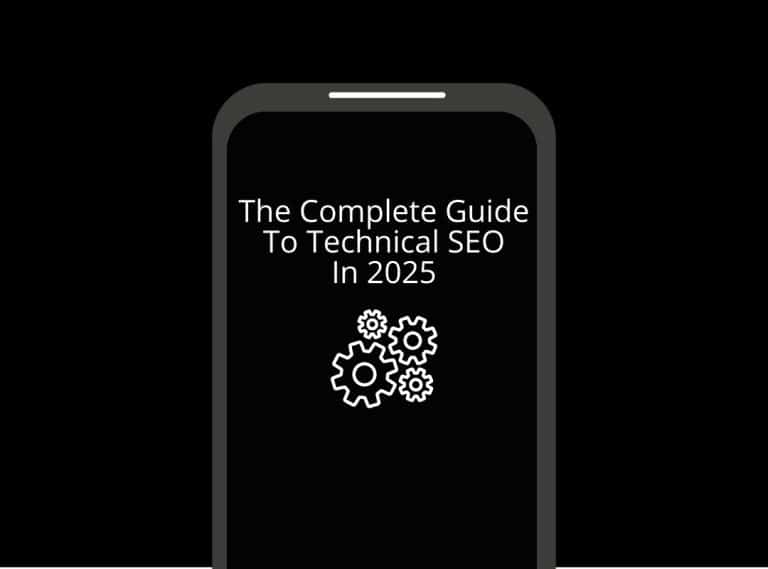Want to boost visibility, trust, and CTR? Implement six proven schema types into your technical SEO strategy that Google rewards with rich results. Product, Review, LocalBusiness, How-To, FAQ and organisation schemas cover product details, social proof, local presence, guided steps, quick answers, engaging content, and brand trust.
Each type drives better indexing and user signals when kept accurate and up-to-date resulting in better performance from SEO. Stay consistent across pages to avoid misidentification. If you keep going, you’ll uncover concrete setup steps and metrics to track.
Product Schema: Elevating Conversions With Rich Product Details
Most businesses will need Product Schema. It adds structured data to product pages, enabling search engines to display rich details like price, availability, and reviews right in the results. You’ll see higher click-through rates when users instantly confirm price, stock status, and stars before visiting your site.
Implementing Product Schema aligns listings with user intent, reducing friction in the shopping journey and guiding decisions efficiently. You’ll boost product benefits visibility by presenting concise, authoritative data next to each item, which helps users gauge value quickly. As you add attributes like size, colour, and material, guarantee accuracy and consistency across pages to improve indexing and trust.
This clarity improves user experience by setting correct expectations, lowering bounce rates, and shortening time to purchase. Track performance with structured data validation and search performance reports, then refine attributes that drive engagement. Actively maintain schema as prices and availability change to preserve relevance and conversion potential. Schema validation helps ensure ongoing accuracy across product pages.
Review Schema: Social Proof That Increases Credibility and CTR
Review Schema adds structured feedback to your pages, letting search engines surface ratings and reviews right in the results and on rich snippets. You’ll reveal immediate social proof that influences click-through and trust. Use review benefits to quantify impact: higher CTR, longer engagement, and improved conversion confidence.
Start with credible sources and consistent formats to maximise crawlability and display consistency. Choose a clear schema type (Review or ProductReview) aligned to your content, then attach author, date, rating, and review body fields to provide context. Balance star ratings with qualitative snippets to avoid truncation loss in SERPs. Implement review strategies that encourage authentic feedback—ask buyers for short, specific comments and avoid incentivised bias.
Validate data integrity with auto-validation tools and monitor structured data errors in the search console. Regularly refresh reviews to reflect latest experiences, maintaining relevance and accuracy. Track metrics: impressions, CTR, and conversion lift, then iterate to optimise performance.
LocalBusiness Schema: Boosting Local Visibility and Foot Traffic
LocalBusiness schema helps you surface your storefront details to nearby customers and drive foot traffic. You optimise for local search by aligning your entity with accurate name, address, and phone data, plus precise business hours.
This boosts map visibility and helps customers plan visits without friction. Use structured data to highlight service areas, geo coordinates, and category relevance, so search engines surface you in relevant queries. Focus on customer engagement by wiring in reviews, events, and socially shareable inventory signals that reflect real-time status.
Mobile optimisation matters: guarantee speed, responsive layouts, and click-to-call actions for on-the-go searches. Build credibility through local partnerships and community involvement signals, such as sponsorships or local listings, which boost trust and local intent. Keep your data current and consistent across directories, then track impact via impressions, clicks, and visits to fine-tune geo targeted ads and promotions.
This approach strengthens footprint and converts curb-side interest into foot traffic. Local search signals further reinforce relevance by tying your business to nearby intents and community context.
How-To Schema: Guiding Users With Step-By-Step Rich Results
If you want to empower users to complete tasks directly from search results, How-To Schema delivers step-by-step rich results that guide them efficiently. You’ll see higher click-through and completion rates when you structure instructions as discrete steps, supported by media like images or videos to reduce ambiguity.
Use a clear sequence, with verbs at the start of each step, and include expected duration to boost user trust. Rich results also surface estimated time, tools, and prerequisites, improving accuracy and user engagement. Data shows pages implementing well-marked How-To markup often capture featured snippets, increasing visibility without sacrificing relevance. Validate each step with concise, actionable language and avoid jargon that slows progress.
Track performance by measuring completion rates and time-to-task completion, then refine steps based on user feedback. Prioritise accessibility, ensuring that steps remain legible in assistive technologies. In short, precise step by step guides plus visual cues boost engagement and completion.
FAQ Schema: Anticipating Questions With Snappy Snippets
Are you leveraging FAQ schema to preempt common customer questions and surface quick answers in search results? You should. FAQ schema testifies to higher click-through and lower bounce by delivering direct responses in rich results. Start with a concise question-and-answer pair that mirrors real user intent, not internal jargon.
Focus on 4–6 top questions that cover buying, setup, and troubleshooting, and guarantee each answer stays within one snippet-friendly paragraph. Measure impact weekly: impressions, clicks, and average position. If you see low visibility, tighten wording, add synonyms, and refresh questions seasonally.
For faq optimisation, align questions to user intent rather than product features alone, and secure accuracy to avoid negative signals. Snippet design matters: structure data with clear hierarchy, use the Q/As as stand-alone units, and include relevant keywords naturally. Validate with Google’s Rich Results Test, fix errors, and monitor performance to refine future content.
Organisation Schema: Structuring Trust for Your Brand Online
Organisation Schema helps you project credibility and consistency across every touchpoint. When you implement organisation markup, you signal core details about your business—name, logo, contact, and locations—in a machine-readable format that search engines trust. This transparency boosts brand authority by aligning online signals with your real-world presence, reducing user doubt at critical decision moments.
Use structured data to declare your official websites, social profiles, and hours, so consumers encounter a cohesive digital presence regardless of platform. Validate the data with consistent NAP (name, address, phone) across pages and directories, minimizing misidentification risks. Rich snippets can surface your organisation card in results, enhancing click-through rates and perceived reliability.
Regularly audit for changes in leadership, affiliated entities, or service areas, and update accordingly. Focus on accuracy over breadth, because precise, timely data sustains trust, improves indexing, and strengthens your brand authority in competitive search landscapes.
If you implement these seven schema types, you’ll see clearer search intent signals and richer search results. Start with Product and LocalBusiness to boost conversions and local visibility, then layer in How-To and FAQ to capture step-by-step intent. Add Review for social proof, Recipe for engagement, and organisation for trust signals. Track impact with CTR and ranking changes, adjust metadata, and iterate. This data-driven approach turns structured data into measurable outcomes.




